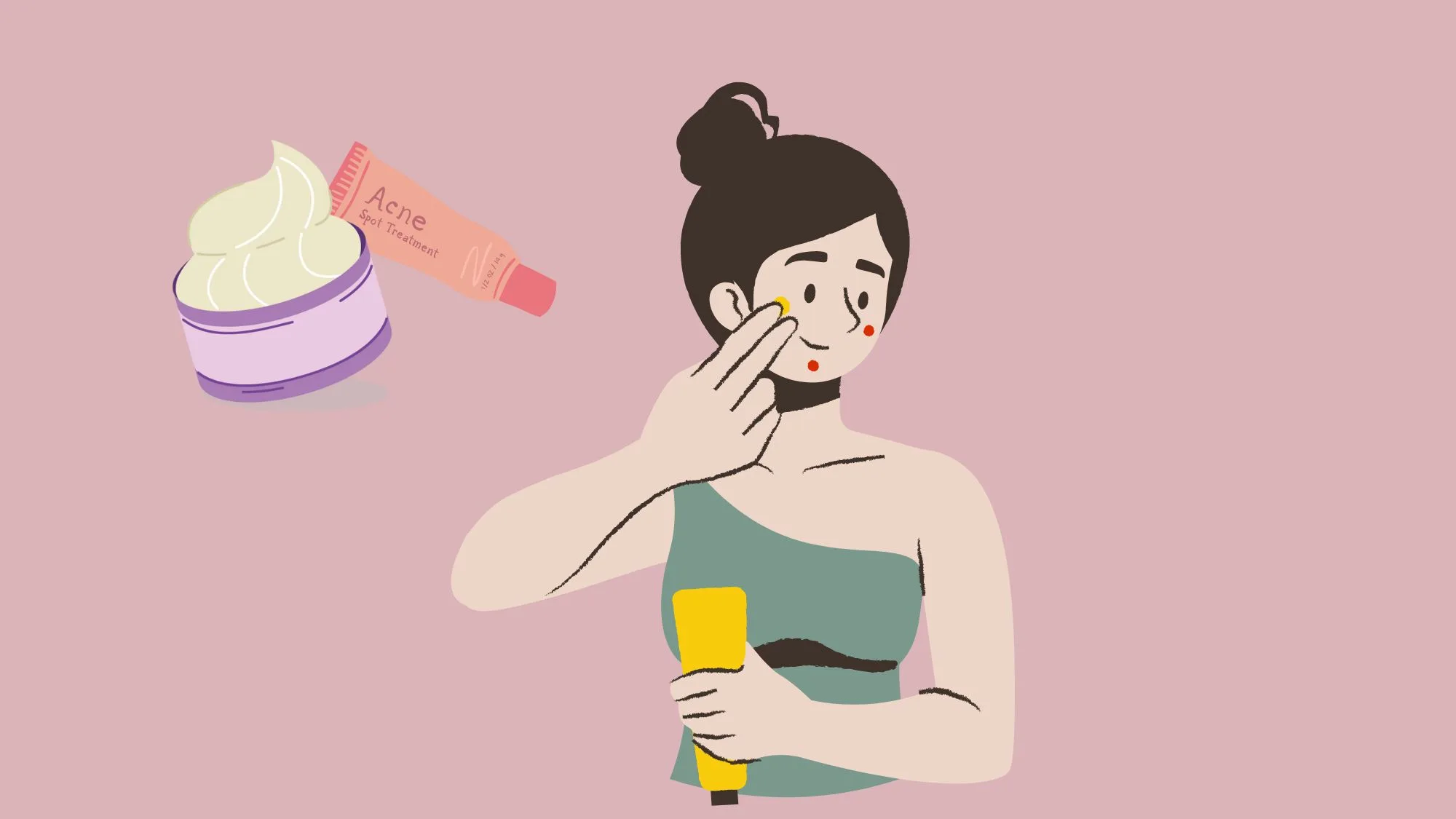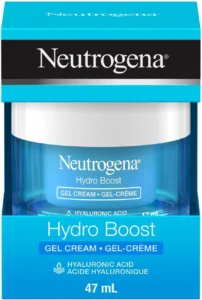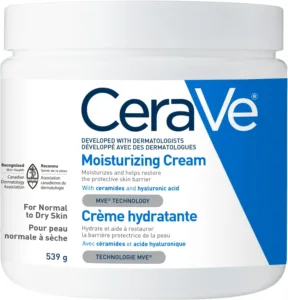
Acne prone skin can be frustrating and challenging to manage. The constant battle with breakouts, redness, and inflammation can leave you feeling self-conscious and desperate for a solution. One important component of managing acne prone skin is finding the right moisturizer. Contrary to popular belief, moisturizing is essential even for oily and acne-prone skin types. In this article, we will explore the science behind acne, discuss the importance of moisturizing, highlight key ingredients to look for in a moisturizer, and provide tips on choosing and applying the best moisturizer for your skin type.
Understanding Acne Prone Skin
Before we dive into the world of moisturizers, it’s important to understand acne prone skin. Acne occurs when hair follicles become clogged with oil, dead skin cells, and bacteria. This leads to the formation of pimples, blackheads, and whiteheads. Several factors contribute to the development of acne, including hormonal fluctuations, excessive sebum production, and inflammation.
Acne is not just a superficial skin condition; it has a complex underlying mechanism. To fully comprehend the science behind acne, we need to delve deeper into its intricacies. Hormones, particularly androgens, play a significant role in stimulating the production of sebum, the oily substance that lubricates our skin. When sebum production increases, it can mix with dead skin cells and clog the hair follicles, creating an ideal environment for the growth of acne-causing bacteria.
However, hormones are not the sole culprits. Other factors, such as genetics, can also contribute to the development of acne. If your parents or siblings have a history of acne, you may be more prone to experiencing breakouts. Additionally, certain medications, such as corticosteroids and lithium, can trigger acne in some individuals.
The Science Behind Acne
Acne is not a simple skin issue that can be solved with a quick fix. It involves a complex interplay of various biological processes. The sebaceous glands, which are responsible for producing sebum, are particularly active during puberty due to the surge in hormone levels. This increased sebum production can lead to the formation of comedones, which are the primary lesions of acne.
Comedones can manifest in two forms: open comedones, commonly known as blackheads, and closed comedones, also known as whiteheads. Blackheads occur when the hair follicles are partially blocked, allowing the trapped sebum and dead skin cells to oxidize and turn black. On the other hand, whiteheads occur when the hair follicles are completely blocked, preventing the sebum from reaching the surface of the skin.
When the hair follicles become clogged, they create an ideal environment for the growth of Propionibacterium acnes, a type of bacteria that naturally resides on our skin. This bacterium thrives in the oxygen-deprived environment within the clogged follicles and triggers an inflammatory response from our immune system. The resulting inflammation leads to the red, swollen, and painful pimples commonly associated with acne.
Common Triggers for Acne Breakouts
Understanding the triggers for acne breakouts can help you manage your condition better. While the exact cause of acne can vary from person to person, there are some common triggers that can exacerbate the condition.
Hormonal changes, such as those that occur during puberty, menstruation, or pregnancy, can significantly impact sebum production and increase the likelihood of breakouts. Stress is another factor that can contribute to acne flare-ups. When we are stressed, our bodies produce more cortisol, a stress hormone that can stimulate the sebaceous glands and lead to increased sebum production.
Diet also plays a role in acne development. While there is no definitive evidence linking specific foods to acne, some studies suggest that high-glycemic-index foods, dairy products, and foods rich in saturated fats may worsen acne symptoms in certain individuals. It’s important to pay attention to your own body and observe how different foods affect your skin.
Lastly, certain skincare products can also trigger acne breakouts. Ingredients like comedogenic oils, heavy moisturizers, and fragrances can clog pores and worsen existing acne. It’s crucial to choose non-comedogenic, oil-free, and gentle products specifically formulated for acne-prone skin.
The Importance of Moisturizing Acne Prone Skin
Many people with acne prone skin tend to shy away from moisturizers, fearing that they will worsen their breakouts. However, moisturizing is a crucial step in any skincare routine, even for those with oily skin. Here’s why:
Balancing Oil Production
Contrary to popular belief, moisturizers do not directly cause breakouts. In fact, they can help balance oil production by providing the skin with much-needed hydration. When your skin is well-hydrated, it produces less excess oil, reducing the likelihood of clogged pores and breakouts.
Furthermore, moisturizers formulated for acne prone skin often contain ingredients like salicylic acid or tea tree oil, which have anti-inflammatory properties and can help control sebum production. These ingredients work to unclog pores and prevent the formation of new acne lesions.
Hydration and Skin Health
Acne prone skin often suffers from dehydration, meaning it lacks water rather than oil. Dehydrated skin can worsen acne breakouts and lead to a dull complexion. By moisturizing your skin, you replenish its moisture barrier, keeping it hydrated and healthy.
Moreover, moisturizers can also help soothe and calm irritated skin. Acne prone skin is often inflamed and sensitive, and a good moisturizer can provide relief by reducing redness and irritation. Look for lightweight, oil-free moisturizers that won’t clog your pores and exacerbate acne.
Additionally, moisturizers can act as a protective barrier against environmental aggressors. They create a shield on the skin’s surface, preventing pollutants and bacteria from penetrating the pores and causing further breakouts. This is especially important for acne prone skin, as it is more susceptible to external irritants.
Moisturizing acne prone skin is essential for maintaining its health and preventing breakouts. By choosing the right moisturizer and incorporating it into your skincare routine, you can achieve a balanced complexion and promote overall skin wellness.
Key Ingredients to Look for in a Moisturizer
When shopping for a moisturizer for acne prone skin, keep an eye out for these key ingredients:
Non-Comedogenic Ingredients
Non-comedogenic moisturizers are specifically formulated not to clog pores. These products are ideal for acne prone skin as they effectively hydrate without causing breakouts. Look for ingredients such as hyaluronic acid, glycerin, and ceramides, which are known for their moisturizing properties without adding to congestion.
Let’s dive deeper into these non-comedogenic ingredients:
Hyaluronic Acid: This ingredient is a powerful humectant that can hold up to 1000 times its weight in water. It helps to attract and retain moisture in the skin, keeping it hydrated and plump. Hyaluronic acid is also known for its soothing properties, making it suitable for sensitive and acne-prone skin.
Glycerin: Glycerin is a natural moisturizer that helps to replenish and lock in moisture. It creates a protective barrier on the skin, preventing water loss and keeping the skin hydrated throughout the day. Glycerin is gentle and non-irritating, making it suitable for all skin types, including acne-prone skin.
Ceramides: Ceramides are lipids that occur naturally in the skin’s barrier. They help to maintain the skin’s moisture balance and strengthen its protective barrier. By incorporating ceramides into your moisturizer, you can help restore and reinforce your skin’s natural barrier function, reducing moisture loss and preventing breakouts.
Anti-Inflammatory Components
Inflammation is a common characteristic of acne-prone skin. Look for moisturizers that contain anti-inflammatory ingredients like niacinamide, green tea extract, and aloe vera. These ingredients can help calm redness and irritation, soothing and healing your skin.
Let’s explore the benefits of these anti-inflammatory ingredients:
Niacinamide: Niacinamide, also known as vitamin B3, has anti-inflammatory properties that can help reduce redness and irritation associated with acne. It regulates sebum production, minimizes pore size, and improves the overall texture of the skin. Niacinamide is a versatile ingredient that can benefit all skin types, making it an excellent addition to your moisturizer.
Green Tea Extract: Green tea extract is rich in antioxidants and has potent anti-inflammatory properties. It helps to soothe and calm irritated skin, reducing redness and swelling. Green tea extract also contains catechins, which have antimicrobial properties that can help combat acne-causing bacteria.
Aloe Vera: Aloe vera is a natural ingredient known for its soothing and healing properties. It helps to reduce inflammation, redness, and irritation, making it an excellent choice for acne-prone skin. Aloe vera also provides hydration without clogging pores, making it suitable for all skin types.
By choosing a moisturizer that contains non-comedogenic ingredients and anti-inflammatory components, you can effectively hydrate and nourish your acne-prone skin without exacerbating breakouts or irritation. Remember to always patch test new products and consult with a dermatologist if you have any concerns or specific skin conditions.
Choosing the Right Moisturizer for Your Skin Type
When it comes to skincare, finding the perfect moisturizer for your skin type is essential. Not only does it provide hydration, but it also helps to maintain the skin’s natural moisture barrier. For those with acne-prone skin, the task of finding the right moisturizer can be even more challenging. However, with the right knowledge and understanding of your skin’s needs, you can find a moisturizer that works wonders for your skin.
Moisturizers for Oily Acne-Prone Skin
If you have oily acne-prone skin, it’s important to choose a moisturizer that won’t clog your pores or contribute to further breakouts. Opting for lightweight, gel-based moisturizers is a great choice. These formulas provide the necessary hydration without feeling heavy on the skin, allowing it to breathe and preventing the accumulation of excess oil.
When selecting a moisturizer for oily acne-prone skin, look for oil-free and mattifying options. These moisturizers are specifically designed to control excess oil production, helping to keep your skin shine-free throughout the day. Ingredients like salicylic acid or tea tree oil are also beneficial as they have anti-inflammatory properties and can help to unclog pores, reducing the occurrence of acne breakouts.
Moisturizers for Dry Acne-Prone Skin
On the other hand, if your acne-prone skin tends to be dry or sensitive, you’ll want to choose a moisturizer with a richer consistency. Creams or lotions that contain ingredients like shea butter, jojoba oil, or ceramides are excellent choices for providing intense hydration and nourishment to your skin.
Dry skin often lacks moisture and can be more prone to irritation, so it’s important to avoid fragrances and potential irritants that may further aggravate your skin. Look for moisturizers that are specifically formulated for sensitive skin, as they are typically free from harsh chemicals and fragrances that can cause dryness or redness.
When applying moisturizer to dry acne-prone skin, it’s best to do so after cleansing and toning your face. This allows the moisturizer to penetrate deeper into the skin, providing long-lasting hydration and creating a protective barrier against external aggressors.
Remember, choosing the right moisturizer for your skin type is just one step in maintaining healthy and clear skin. It’s also important to follow a consistent skincare routine, including cleansing, exfoliating, and using targeted treatments for acne-prone skin. By taking care of your skin and using the right products, you can achieve a healthy and radiant complexion.
Top 2 Best Moisturizers for Acne Prone Skin
It is frustrating to find the right moisturizer for acne-prone skin. You’re looking for a product that can moisturize your skin effectively without blocking pores or triggering breakouts.
- Neutrogena Hydro Boost Face Moisturizer. Ligament Restore is a powerful blend of glucosamine, collagen, amino acids, vitamin C, and herbs designed to support the natural repair process of healthy connective tissue. This formula, combining collagen and glucosamine sulfate, is crafted to alleviate joint pain. For optimal results, it is suggested to take 4 capsules daily in divided doses with 8–10 oz of water, preferably with meals. Results may vary individually. Restore and support your joints with this effective supplement.
 Neutrogena Hydro Boost Face Moisturizer
Neutrogena Hydro Boost Face Moisturizer
- CeraVe Moisturizing Cream. Experience deep hydration and protection with our Hyaluronic Acid Moisturizer. Formulated for dry skin, it guards against harsh conditions and environmental stressors. Patented time-release technology ensures all-day hydration for the face, body, and hands. This gentle, fragrance-free moisturizer is suitable for normal to very dry skin, promoting skin barrier health with essential ceramides. Developed with dermatologists and recognized by the Canadian Dermatology Association, CeraVe keeps your skin nourished and resilient.
How to Apply Moisturizer Effectively
Best Practices for Applying Moisturizer
Here are some tips to ensure you get the most out of your moisturizer:
- Cleanse your face with a gentle cleanser before applying moisturizer.
- Apply a small amount of moisturizer to your fingertips.
- Gently massage the product into your skin using upward strokes.
- Allow the moisturizer to fully absorb before applying any other skincare products or makeup.
Moisturizing your skin is an essential step in any skincare routine. Not only does it help to hydrate and nourish your skin, but it also creates a protective barrier that locks in moisture and prevents dryness. However, applying moisturizer effectively is just as important as choosing the right product for your skin type.
When it comes to applying moisturizer, it’s crucial to start with a clean canvas. Cleansing your face with a gentle cleanser removes dirt, oil, and impurities, allowing the moisturizer to penetrate deeply into your skin. This step also helps to prepare your skin for better absorption of the moisturizer’s active ingredients.
Once your face is cleansed, it’s time to apply the moisturizer. Take a small amount of the product and warm it up between your fingertips. This will help the moisturizer to spread more easily and evenly across your skin. Avoid using too much product, as this can leave your skin feeling greasy and may clog your pores.
Using gentle upward strokes, massage the moisturizer into your skin. This motion not only helps to distribute the product evenly but also promotes blood circulation, giving your skin a healthy glow. Be sure to cover your entire face, including your neck and décolletage, as these areas are often neglected but are just as prone to dryness.
After applying the moisturizer, give it some time to fully absorb into your skin before moving on to other skincare products or makeup. This allows the moisturizer to work its magic and ensures that subsequent products can be applied effectively. Waiting for a few minutes also helps to prevent pilling or product buildup, which can interfere with the performance of your skincare routine.
When to Apply Moisturizer in Your Skincare Routine
The best time to apply moisturizer is after cleansing and toning your skin. This allows for better absorption and ensures your skin stays hydrated throughout the day. Toning helps to balance the pH of your skin and prepares it for the moisturizer, creating an optimal environment for the product to work effectively.
It’s important to note that everyone’s skincare routine may vary depending on their specific needs and preferences. Some individuals may prefer to apply moisturizer in the morning, while others may find it more beneficial to do so at night. Experimenting with different timings can help you determine what works best for your skin.
Additionally, incorporating a skincare tracking app, such as the CareClinic App, can be a helpful tool in staying consistent with your skincare routine. These apps provide reminders and allow you to track your progress, ensuring that you never miss a step and take the best care of your skin.
Applying moisturizer effectively is crucial for maintaining healthy and hydrated skin. By following the best practices mentioned above, you can ensure that your moisturizer is properly absorbed and provides maximum benefits. Remember, consistency is key when it comes to skincare, so make moisturizing a regular part of your routine for long-lasting results.
Manage Your Skincare Routine Using CareClinic App
Managing acne-prone skin requires consistency and attention to detail, which is where the CareClinic App can be a game-changer for your skincare routine. By using the app to track your daily moisturizing habits, monitor the effects of different products, and note any changes in your skin’s condition, you can gain valuable insights into what works best for you. The app’s features allow you to set reminders for your skincare routine, ensuring you apply your moisturizer at the optimal time every day. Plus, you can document your progress and adjust your regimen as needed, based on real data. With the CareClinic App, you’re not just applying a moisturizer; you’re taking a proactive step towards healthier skin. Ready to enhance your skincare journey? Install the CareClinic App today and start seeing the benefits of a personalized, data-driven approach to managing your acne-prone skin.



 CeraVe Moisturizing Cream
CeraVe Moisturizing Cream